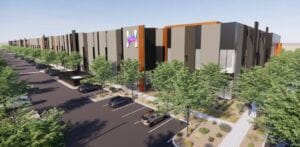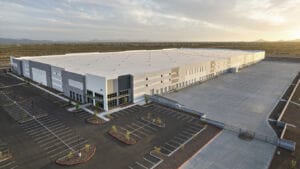An advantageous balance of moderate growth, low inflation, and falling long-term interest rates in the U.S. kept capitalization rates for commercial real estate assets broadly stable in the first half of 2019, according to the latest research from global property advisor CBRE.
The CBRE North America Cap Rate Survey found that multifamily and industrial cap rates tightened the most in H1 2019, while office, retail and hotel cap rate movements were more modest. This trend held true in Phoenix, where multifamily cap rates continued to fall. Continued cap rate stability is expected in the remainder of 2019, with the hotel sector experiencing the most mixed sentiment.
“While the fortunes of the global economy should be watched closely due to increased tensions over trade with China, Persian Gulf hostilities, and the prospect of a hard Brexit, there seems to be sufficient economic momentum and monetary policy flexibility in the U.S. to sustain real estate prices. While concerns are heightened, we have seen no evidence of investors ‘hitting the pause button’; indeed, the appetite for real estate from debt and equity capital remains very strong,” said Richard Barkham, Global Chief Economist, CBRE.
Among the major commercial real estate sectors:
• Office cap rates for stabilized CBD properties decreased slightly to 6.67% in H1 2019, with Class AA properties in Tier II markets registering the largest decrease (-12 bps), likely reflecting a shift by investors into high-quality properties in secondary markets. Stabilized suburban office cap rates remained at 7.91%, supported by improving market fundamentals, but spreads to CBD cap rates are near their highest levels this cycle.
• Overall, in Phoenix, suburban and CBD office properties followed national trends, showing no change between H2 2018 and H1 2019. CBD office properties averaged cap rates of 7.16% while suburban office properties averaged cap rates of 7.41%. Cap rates for Class AA product in both CBD and suburban sectors were the lowest at 5.75% and 5.88%, respectively.
“Office cap rates should remain stable for both CBD and suburban properties over the next six months, supported by strong tenant demand for space, favorable investment sentiment, and expectations for stable or decreasing interest rates,” said Chris Ludeman, CBRE’s Global President of Capital Markets.
• Industrial and logistics cap rates and returns on cost remained at historically low levels in H1 2019. The average rate for acquisitions of stabilized industrial assets for all tiers and classes fell by 5 bps to 6.27%. Class A cap rates declined 5 bps to 5.00%, the lowest level since CBRE’s Cap Rate Survey began in 2009. Although cap rate decreases by class were modest on average, they confirm investor preferences for Class B assets in Tier II and Tier III markets where the largest cap rate compression occurred.
• In Phoenix, the average rate for acquisitions of stabilized industrial assets for all classes stayed at 6.29%, showing no change between H2 2018 and H2 2019. Meanwhile, expected returns on cost of Class B value-add industrial properties dropped 25 bps to 6.88%.
“Strong market fundamentals—low vacancy, robust e-commerce has driven tenant demand and rent growth—continue to attract investors to industrial assets, increasing values and leading to sustained cap rate compression. Due to high competition for core properties, investors remain interested in assets with a higher risk profile. Investors are looking beyond year-one cap rates and to the increasing returns provided by predictable rental rate growth throughout the life of the deal,” said Jack Fraker, CBRE’s Global Head of Industrial & Logistics.
• Retail cap rates for stabilized grocery-anchored neighborhood/community centers remained stable at 7.48% in H1 2019, confirming firm pricing trends and strong investor interest. Big-box and other retailer closures continued to influence the perceived risk profile for power centers, with average cap rates increasing by 6 bps to 8.45%. High-street cap rates were relatively stable and remained the lowest of all retail property categories at 4.76%. Demand for high-quality retail assets was strong, with Class A product in all three retail sectors the lowest, ranging from 4.76% to 7.16%. Expectations for cap rate movement across retail segments is relatively uniform over the next six months.
• In Phoenix, cap rates for stabilized power centers of all classes remained unchanged for an entire year at 8.42%. Cap rates for Class B neighborhood/community centers dropped 25 bps to 7.75%, while cap rates for Class A and Class C neighborhood/community centers stayed at 6.25% and 8.88%, respectfully, all year.
• Multifamily cap rates and expected returns on cost remained at historically low levels in H1 2019. Cap rates for urban infill stabilized assets averaged 5.20% and expected returns on cost for infill value-add acquisitions averaged 5.95%. Suburban stabilized assets priced at 5.49% on average, while expected returns on costs averaged 6.23%.
• In Phoenix, multifamily cap rates and expected returns on cost continued to drop from H2 2018 through H1 2019. Cap rates for infill stabilized property acquisitions decreased 21 bps to an average of 4.75% while expected returns on cost for infill value-add acquisitions averaged 5.92%. Suburban stabilized assets averaged cap rates of 4.79%, a decline of 42 bps. Suburban Class A cap rates fell 13 bps to 4.75%, Class B cap rates fell 38 bps to 4.63% and Class C cap rates declined 75 bps to 5.00%. Expected returns on cost for suburban value-add acquisitions averaged 5.92%.
“The region has been one of the top markets for rent growth for the last two years with year-over-year rent growth of 8.4% in Q2 2019 and there is limited new supply combined with significant renter demand, which supports continued rent growth,” said Matt Pesch of CBRE Multifamily Institutional Properties in Phoenix. “Investors are attracted to the strong economic fundamentals in Phoenix and there is a tremendous amount of liquidity chasing deals across all classes, creating a competitive investment environment that is putting upward pressure on pricing.”
Hotel cap rates remained stable in H1 2019 at 8.28%. The most dramatic increases occurred among full-service and economy segments in Tier I cities. Cap rates in Tier I suburban locations for full-service hotels increased by 20 bps to 8.02%. Every market segment in Tier III cities recorded declines in hotel cap rates, led by a 10 bps drop in the economy segment.
• Phoenix CBD and suburban hotel properties followed the national trends, showing no change in cap rates from the second half of 2018 to the first half of 2019. The cap rate for a CBD hotel property averaged 7.75% and the cap rate for a suburban hotel property averaged 7.88%.
“Late cycle operating fundamentals continue to place downward pressure on investment activity which is down almost 50% from 2018; however, cap rate volatility between markets should not be viewed as indicative as it is being driven by changes in sales composition rather than actual movements in capitalization rates,” said Kevin Mallory, Global Head of CBRE Hotels.




